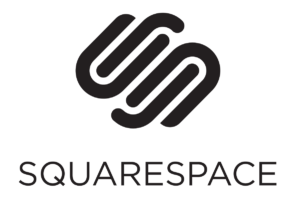SEO TIP: Don’t Just Look At Your Landing Pages
“Why aren’t my landing pages ranking for certain keywords?”
That’s probably the most common question in SEO, and it’s not always easy to answer. We usually respond by asking clients why they want to rank for a given term; are they sure that their audience is using that term? Will the people searching for that keyphrase end up making a purchase, speaking with a salesperson, or reading an article?
But for the purposes of this article, we’re going to assume that you’ve gone through all that. You know where you want to rank, you’ve chosen your keywords carefully, and you’re not getting results.
What’s wrong with your landing page? What do you need to tweak to build a successful approach to SEO?
For starters, you’re only looking at the landing pages.
That’s a problem.
Here’s why: Google looks at your entire website in order to establish its semantic profile (semantics are words similar to the keyphrase, or related to the keyphrase, but fundamentally different). The more you write about a certain topic, the more authoritative your website seems.
As an example, consider two websites with roughly equivalent landing pages. They’re shooting for the search keyword “dog food.” One site has a single page about dog food; the other has 100. Even though the landing pages are equivalent, why wouldn’t the search engine prioritize the site with more content? It offers more resources for readers; it likely has more relevant links, more related keywords (think “nutrition in dog food,” “low-calorie dog food,” “canine chow,” etc.) and a better overall experience for searchers.
You might have the perfect landing page, but if it’s the only page on your site that uses a certain keyphrase, it probably won’t rank. Why should it? A website with dozens of high-quality, relevant pages should always beat a website with a single relevant page.
Use that principle to guide your SEO plan.
Yes, your landing page needs to be perfect, but you’ll need to make sure that you’ve got other relevant pages to improve your site’s semantic profile.
Oh, and quality is crucial. You can’t just fill a bunch of pages with keywords; make them real resources that will help your audience get the information they need. Cover broad topics and niche topics. To go back to our dog food example, you might write blogs like:
- What To Know About Raw Diets for Dogs
- What Nutrition Do Dogs Need?
- Why Dogs Are Natural Omnivores
- Choosing A Food For A New Puppy
Don’t worry as much about fitting in keywords. Worry about making useful, functional articles. Ideally, you’ll write 400-600 words on each topic, but if you can get a few thousand words in without stretching, do it. As long as you’re providing quality content, you’re spending your time well.
SEO is a long process, and you’ll still have to pay plenty attention to your landing pages. Our point is simply that your landing page isn’t the only factor in your ranking for a certain keyword. Look at your entire site and consider whether you’re truly offering the best result—after all, that’s exactly what Google’s doing.
Should You Hide Blog Categories with Noindex Tags?
Recently, we had a few clients ask whether they should be putting a “noindex” or “nofollow” tag on their blog category, author, and tag pages. WordPress creates these pages to provide another avenue for site organization; they’re potentially useful to your users, and if you’re creating content on an ongoing basis, it’s usually a good idea to leave them in place.
But should those pages be crawlable? Won’t search engines see them as duplicate content, since they contain some of the same language as your blogs?
Plugins like Yoast give you an easy way to noindex these pages. In Yoast, the setting in question looks something like the image below.

Yoast giveth, and Yoast taketh away.
Simply click those “noindex” buttons, and you’ll, uh, noindex the pages. It’s not rocket science.
Of course, before you take that step, you’ll have to determine whether or not you actually want those pages to be noindexed. You certainly don’t want to nofollow them, since there’s no real benefit to doing that (and the nofollow tag shouldn’t be commonly used, anyway; that’s a subject for another blog).
Here are the questions you should ask before using the noindex tag anywhere.
Is this page useful to readers in a unique way, and does it have enough content? If so, Google will probably want the option to show it in search.
“But wait,” you say, “these pages aren’t useful, and I’m worried that they’re preventing me from achieving my keyword ranking goals.”
First of all, stop talking out loud at your computer. I’m not the NSA, and I can’t hear you through the monitor (usually). Second, you’re probably not cannibalizing your own search ranking, because that’s really hard to do.
Here’s why: If you’ve got two pages that are great responses for a given query, search engines will simply show both. They’re generally not going to interpret your tag or category page as duplicate content, since hundreds of thousands of WordPress websites use those page types for organization; Google absolutely understands why they’re there and what they do. Google is smart. Google is wise. All praise Google.
Search for FiveThirtyEight’s reportage on Jon Ossoff, for instance, and the tag page comes up first, followed by FiveThirtyEight’s articles on the Congressional challenger. Google interpreted the tag page just fine, and determined that it was the best response to my query.
And you know what? Google got it right. That page provided a better resource than any of the individual blogs.
I should note that my approach here is atypical; many SEOs insist on noindexing tag pages by default. In fairness, there are some instances in which you’d want a blog tag, category, or author page to stop showing up in search.
- If your site is new or extremely small, the blog tag pages will likely be very low quality. They may list a single blog, and if that’s the case, the blog would surely be a better query response.
- You also might not use blog tags. In this case, I’d disable the tags entirely, but noindexing the pages is still an option, I guess, if you’re lazy. Are you lazy? Don’t be lazy.
- You might have a single author, in which case the “author” pages are redundant. In that case, again, I’d just remove the actual author pages—why trust a noindex tag when you can scrub your site of redundancy?
I would noindex these types of pages in one situation: If I had a small site that was adding content slowly, and I believed that the tag/category/author pages would be useful at a later date. That situation is extremely common; if you’re just now starting a blog, for instance, this is the approach to take. In fact, we noindex our tag/category/author pages for this very reason.
Also, I don’t post as often as I should, since I’m usually busy writing stuff for clients, and our category pages are pretty bad as a result. The shoemaker’s children have no shoes.
But what about the dreaded duplicate content penalty?
Well, these organizational pages aren’t really duplicate content—they serve a unique purpose. And the whole “duplicate content penalty” might be scary, but it’s usually not a major concern if you’re not plagiarizing.
In most cases, if Google sees similar content on two pages, it’ll simply choose one of the pages to rank—it won’t ban your domain or anything like that. You’re not getting a manual penalty unless you’ve been doing some shady stuff.
The bottom line is that tag/category/author pages are absolutely fine on larger sites. On growing sites, the noindex tag is fine, but realize that it’s just a suggestion (and Google frequently ignores that suggestion if it thinks you’re mistaken). And before using any SEO directive, make sure that you’re not missing a cleaner solution.
Oh, and if you vehemently disagree with this post, we’d love to hear why. Post a comment below and I’ll respond (and call you names behind your back).
Can You Build An SEO-Friendly Site with Squarespace?
Squarespace is a rapidly growing web platform, promoted heavily through podcasts, banner ads, and even a TV spot during the Super Bowl. Unlike WordPress, it’s not free; personal sites are available for $18/month, while business accounts are available for $26/month.
So, can you build a ranking website for that money? Squarespace proudly proclaims that all of its sites are automatically SEO optimized, with powerful analytics and fully integrated e-commerce tools.
We decided to look at Squarespace’s SEO features in detail. In the end, we believe that it’s ideal for small businesses, but not quite as powerful or versatile as WordPress. Let’s dig in a little deeper.
Basic SEO Features – To optimize your content, you’ll need to start with optimized title tags and meta description tags. Squarespace provides resources for inputting these tags on a page-by-page or full-site basis. You can find instructions for inputting a page title and meta description in your Squarespace theme by visiting the platform’s support page here.
One issue with Squarespace is that, by default, it uses H1 tags throughout standard pages for page headlines. As a result, many pages have multiple H1 tags, which is typically thought of as bad practice.However, the company claims that this isn’t an issue, since HTML5 introduces new tags for page structure.
In our view, it’s not an ideal practice, and there isn’t much justification for preventing users from controlling their H1/H2 tags. Still, Squarespace is correct in saying that header tags aren’t a major ranking factor, and we doubt that Squarespace sites are meaningfully penalized. It appears that Squarespace is prioritizing simplicity over versatility, and there’s nothing inherently wrong with that.
Analytics – Website analytics play a huge role in any well-constructed SEO plan, and Squarespace sites automatically have access to the platform’s proprietary analytics tool. This is not the same as Google Analytics, and you’ll likely get different numbers from each tool, especially when looking at search engine queries.
Google Analytics is absolutely more powerful than Squarespace Analytics, but you can use both tools on the same site. The Squarespace tool is perfectly fine for businesses that aren’t looking for complex usage data, but as your site grows, you’ll probably want to become adept at creating filters in Google Analytics, as the service provides much more detailed information.
E-Commerce – For many businesses, Squarespace’s 2 percent sales transaction fee (3 percent for personal sites) will be a dealbreaker. If you can get past that, you’ve got decent control over the items in your e-commerce store, although you don’t have as much versatility as you might get with Magento or even WooCommerce.
Ultimately, we think that Squarespace’s SEO features work exactly as intended. Other than header tag manipulation, we couldn’t think of a single common SEO task that we couldn’t figure out through Squarespace, especially given the presence of their “code injection” tools.
There aren’t a ton of advanced features right out of the box, but unless you’re willing to really dig into SEO, advanced features can do more harm than good. While Squarespace takes a somewhat minimal approach to search engine optimization, that’s perfectly fine for 95 percent of websites—and if you’re in the upper echelon of sites, we’re sure that you can handle more auspicious SEO projects with a quick call to Squarespace support.
There’s no reason that you can’t build a ranking website on Squarespace, and because the platform updates automatically, it’s a perfectly acceptable option for small businesses, bloggers, and anyone who doesn’t want to mess around with WordPress installations. Just make sure you fill your new site with plenty of fresh, high-quality content (or better yet, hire us to do it).


